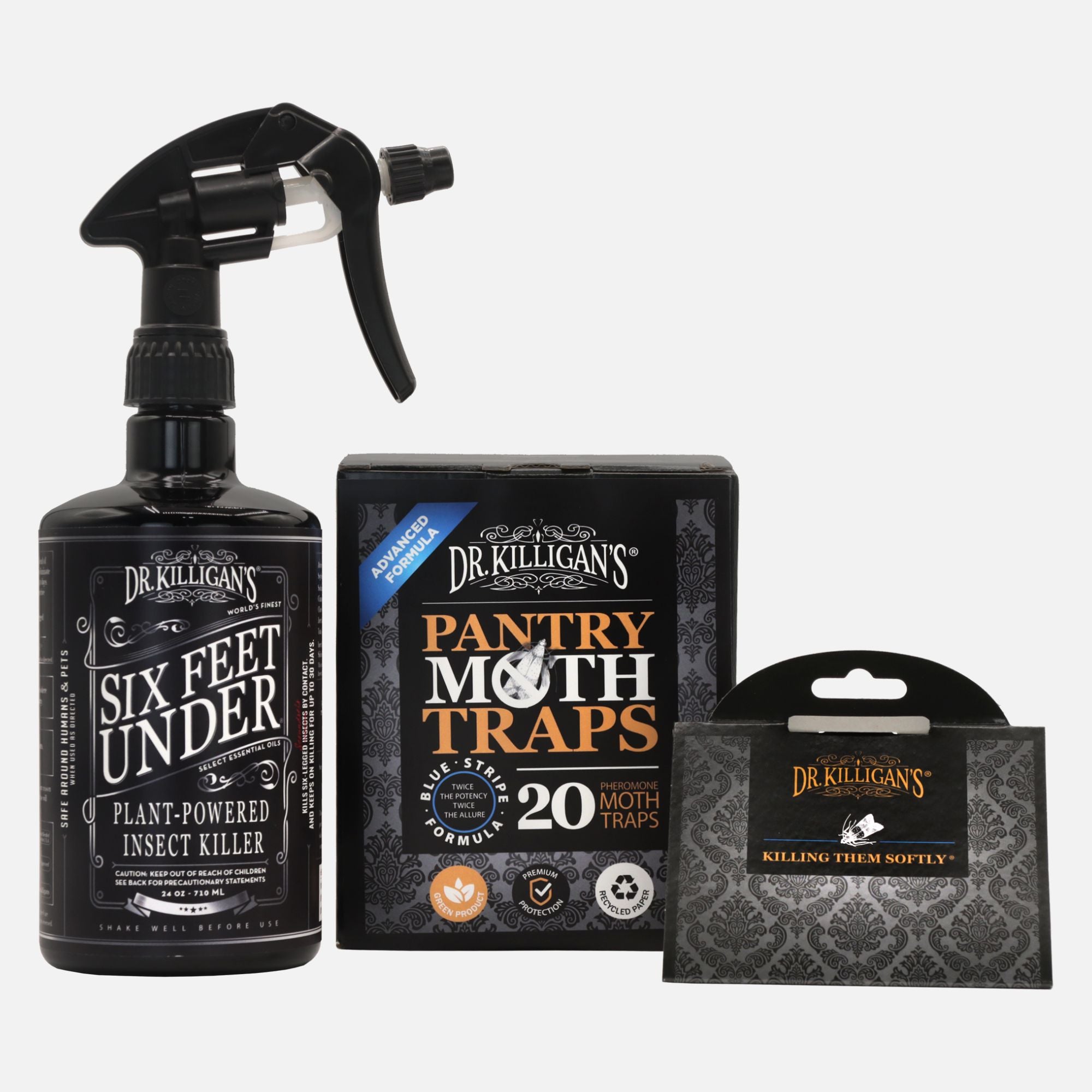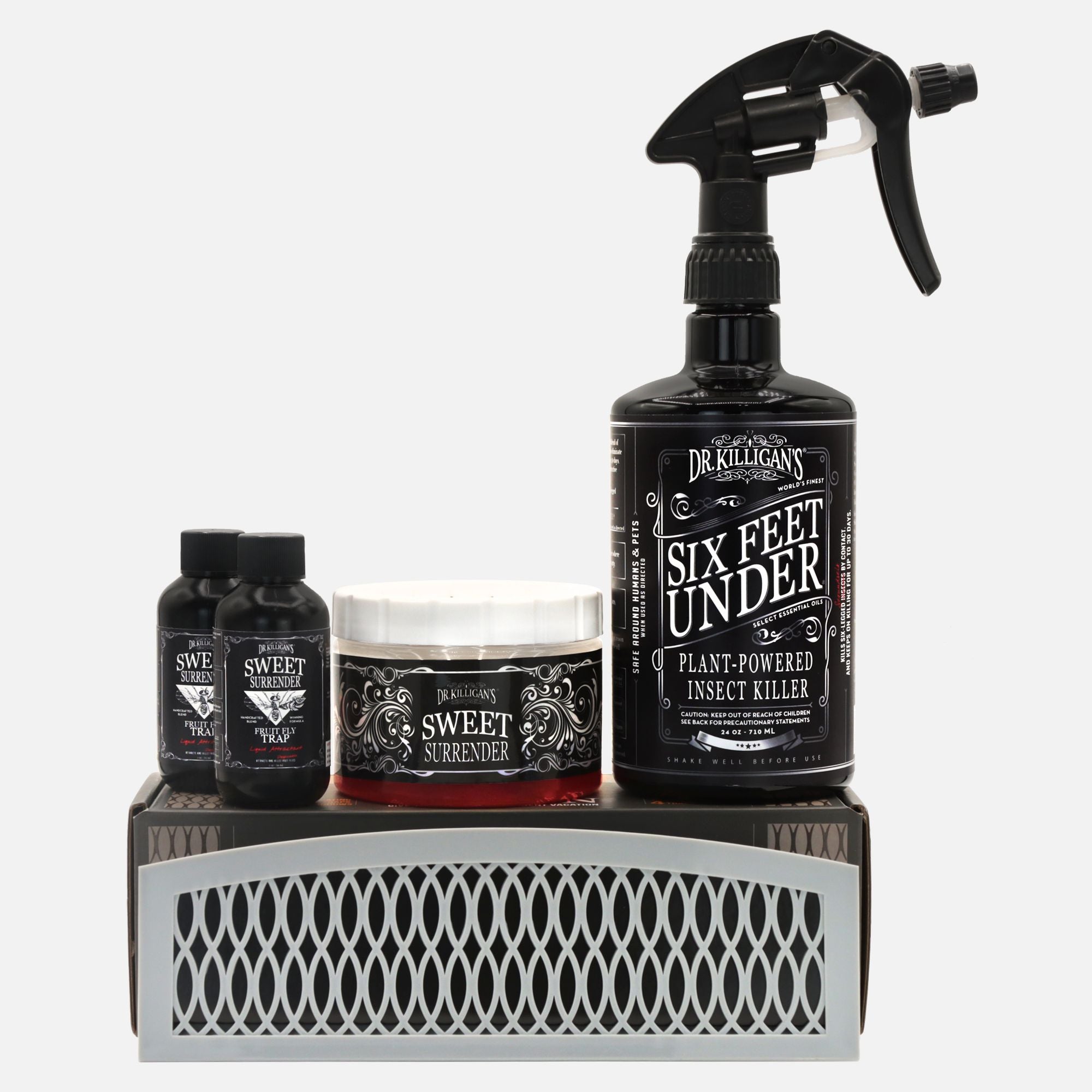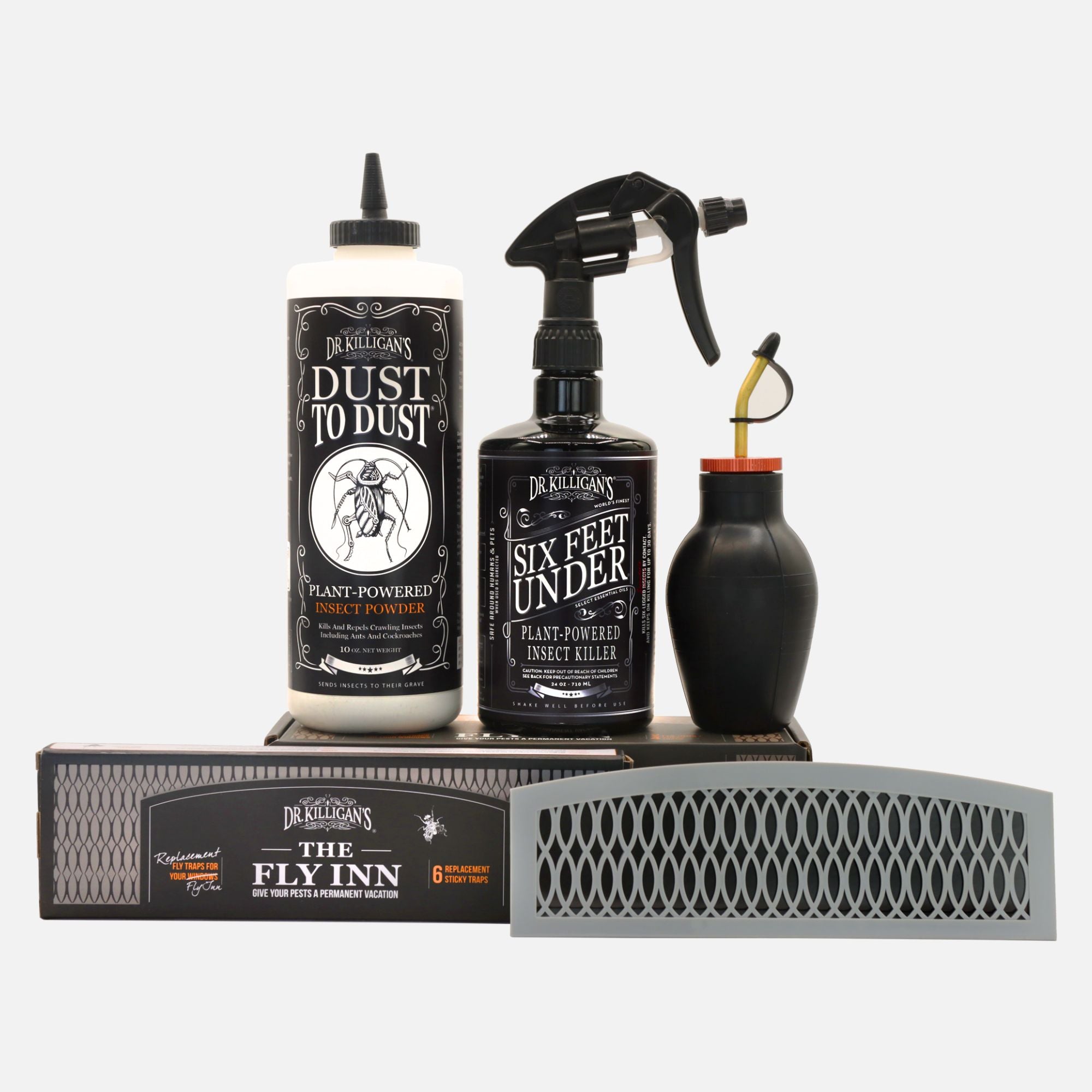As your very secure and glorious brown cardboard package (with moth traps inside) quickly arrives on your sunny swept porch, you may be tempted to rip the box to shreds, triumphantly raise the safely intact traps to the heavens, declare war on these beasts... and then realize that you feel slightly unsure, a tad uncomfortable and a bit perplexed.
In your joy, the instructions on trap placement scattered to the four winds. Did your toddler try to eat them? Did the cat think it was a play toy? Did your furry golden retriever drop it in his water dish? (It drives you mad when he does that.) Did your lovely wife, who has a fetish with cleanliness, already crumple and recycle them?
Regardless of what really happened, it’s important to feel confident in trap placement. Knowing where to place your traps is key. It is the way out of this moth infestation. It’s the way to get rid of these moths.
To get rid of pantry moths, where is the best location for my (pantry) moth traps?

First, start with three traps.
- Remove the protective sheet (to expose the glue)
- Fasten the trap
- Spread the three traps out near where infested food has been found
The idea is to create a "web" of three traps in the kitchen; one trap being in the cupboard or pantry and the other two in locations that (ideally) complete a triangular formation. Note: These locations may be on the top of your fridge or another open location.
It’s important to understand that, regardless of spacing, you will not be confusing the male moths, who are following the pheromone scent that is being released. Rather, by strategically placing several traps, you are maximizing the net to catch these non-disease carrying pantry moths and lessening the likelihood that they will flitter into other areas of your home.
In your traps, you will be catching adult male moths. In following the scent of the pheromone (in the traps), they are being fooled into thinking that they are following the trail of a female pantry moth. You know (no fooling here) that you are bringing their life cycle to a fatal, abrupt end. Without the males, the females cannot reproduce.
To get rid of clothing moths, where is the best location for my (clothing) moth traps?

Again, start with three traps.
- Hook one trap on your closet clothing rod.
- Place one trap near or on the ground in your closet. Note: This is important, as clothing moths are not strong fliers.
- Place a third trap outside of your closet door, around 8-10 feet from the source of your infestation. Note: This will lure the moths away from your closet.
Because you want to ensure that the pheromone is free to naturally flow, do not place a trap on a clothing rod that has an overflow of garments. Allow space for the trap’s pheromone to circulate and thus attract the moths.
Tip: In trap placement, understanding a bit about clothing moths can be most beneficial. They thrive in dark, quiet places, shunning light and preferring to metaphorically place the "do not disturb" sign on all of your keratin-rich fabrics, (where they are greedily feasting and laying their eggs). Thus, place your traps in darker, quieter, low-traffic locations.
If there is constant airflow, the pheromones in our premium traps can permeate up to 100 feet. Be mindful, though, that clothing moths prefer still locations. Do not place a fan directly by the trap.
What if my traps aren’t catching any moths?
Before tossing the traps into the nearest garbage can, ensure that you have the right type of trap. Tip: When a trap doesn’t seem to be working, the wrong type of trap is often being used.
To ensure you are using the right trap:
- Catch a moth
- Take out a magnifying glass
- Look carefully at the moth in-hand
Also, watch the behavior of the moth:
- Was the moth flying well (or awkwardly)?
- Where was it found?
- What did it appear to be eating?
- Was it attracted to (or shy of) light?
- Was it on the larger (or smaller) side?
Pantry moth identifying traits
- Color: Distinct dark reddish-brown color at the tip of their wings
- Length: ½ inch long
- Drawn to light: Yes
- Flight: Strong, can fly great distances to seek out food sources, and are often seen flying around your home
-
Behavior: Active

- Feed on: Dry food items, such as pasta or beans
- Location: Primarily found in your pantry or other food storage areas
Clothing moth identifying traits
- Color: Uniformly gray
- Length: ¼ inch long
- Drawn to light: No
- Flight: Weak, tending to flutter about rather than fly in a direct, steady manner. Remains close to their food sources at all stages of their lifecycle
- Behavior: Shy, shunning light and hiding in dark areas
- Feed on: Animal fibers, such as wool or cashmere. (Ensure that it’s not a carpet beetle).
- Location: Primarily found in the dark recesses of your closet or other areas where animal fiber fabrics are stored
If you believe that you may have purchased the wrong type of trap, please do not hesitate to reach out to us. You are welcome to contact us by phone at (844) 525-2779, chat with a live agent at drkilligans.com during regular business hours or email us at support@drkilligans.com.
Can I have several attractants together in one area?
It’s best to have one main attractant. If you have multiple “smells” throughout your home, you will confuse the moths. Do not place these attractants in the same location:
- Moth traps
- Lavender sachets
- DIY powdered herb bags
- Essential oil drops
Remember that the scent of the attractant (or repellent) will permeate your home.
Our premium traps use pheromones that are infused inside the glue to attract the male moths. These pheromones travel slowly, do not fade quickly and are effective over a long range. Their direction is not limited to straight lines and sound and sight receptors are not needed for pheromone detection.
How long does it really take to catch the moths?
As Miles David said, "Time isn’t the main thing. It’s the only thing." You must allow adequate time for your traps to be effective.
For pantry moths, we recommend at least 10 days to allow the powerful pheromones to lure in the male moths and begin to see results. Quite often, the moths begin to swarm around the traps as soon as the adhesive paper is taken off, but results may vary according to time-of-year, airflow within your home, time-frame in regards to the reproductive cycle of the moths and placement of the traps.

For clothing moths, we recommend at least 25 days, as clothing moths are quite shy and will not readily leave the comfort of their keratin. If you don’t catch any moths within the first several days, don’t feel disheartened. If you have clothing moths, they will find the traps.
Moths can be difficult to eradicate. Often, while the first round of traps is catching adult males, there is a second round of eggs incubating. Just when the problem seems to be under control, the new eggs hatch. Each time there is a hatch, there will be fewer and fewer moths (meaning fewer and fewer males). To wipe out all of the cycles of moths, it can take as little as 3 weeks or it can take up to 6 months, depending on how bad the infestation is, how clean the kitchen is and, most importantly, if all of the contaminated food sources have been eliminated.
Can I move the traps from their original location?
If after several days of having placed the traps you witness moths in other locations or are not catching many moths, I encourage you to change the location of your traps. Find that “sweet spot.” Due to varying airflow in a home, changing the location of your traps may help maximize trapping efficiency.
How often do I need to change out my traps?
Once the protective sheet has been removed and the pheromone is released, both types of moth traps are effective for three months. After three months, the strength of the pheromone will begin to wane. You do not need to change the traps out more frequently than at the 12 week mark unless they fill up to the point that they cannot effectively catch any more moths.
Unopened, the traps remain effective for three years from the date of manufacture, which is located on the inside flap of the trap box.
Why am I still seeing moths in my home? And what’s next?

Be encouraged, my friend. Keep your chin up. The tide is about to change—in your favor. Your reward is at hand!
Remember that you will have to continue to kill the female and juvenile moths by hand, as the pheromone-rich traps only attract the adult male moths. You are interrupting the mating cycle. You will see the moth issue diminish.
You can also quickly kill them through a rapid spray of our non-toxic Six Feet Under spray, which targets moth larvae and eggs.
Here on out:
- Be proactive
- Prevent a pantry moth infestation
- Repel those clothing moths with our sustainably sourced, 100% Eastern Red Cedar Cedar Planks
- Keep clothing moths forever out of your closet and your home




















